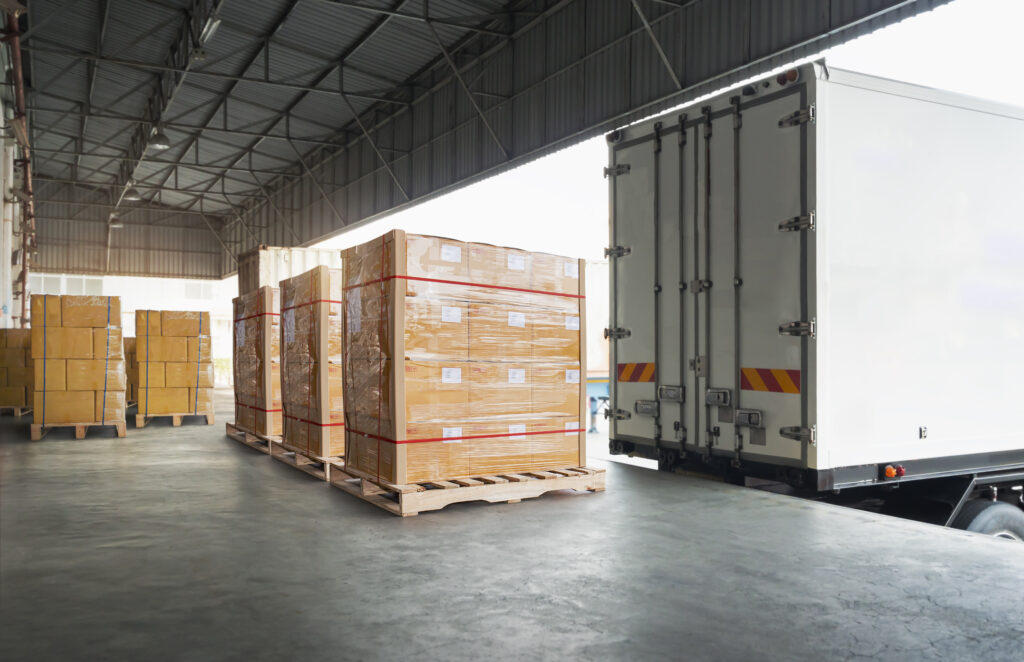Canadian exporters are feeling the pressure. The newest wave of US tariffs has disrupted cross-border trade in ways that go beyond price tags. From delayed shipments to cost overruns and sudden classification changes, exporters across multiple sectors are being forced to adapt—fast.
At WTC Group, we’ve spent over two decades navigating international trade complexities. This latest round of US tariffs has created a storm of uncertainty, but it’s not without solutions. Here’s what’s happening, what it means for Canadian exporters, and how to move forward without stalling growth.
What’s New with US Tariffs-and Why They’re Hitting Harder
US tariffs are no longer just blanket policies—they’re now being enforced with sharper focus and stricter oversight. The USTR has shifted to more targeted measures, with updated tariffs hitting sectors like aluminum, steel, fertilizer, lumber, and key manufactured goods.
But the bigger change? Classification. Longstanding HS codes are being reinterpreted, and exporters are seeing products bumped into new, higher-tariff categories without clear notice. Even minor tweaks in packaging or usage can now trigger reclassification. In one recent case, a processed grain product faced nearly a 20% hike after a coding update, despite no change in the actual product.
Scrutiny under USMCA has also ramped up. Goods once qualifying for duty-free treatment are under tighter audits, and exporters are being asked for detailed origin records that many weren’t tracking at that level.
Customs enforcement has become more aggressive overall. Incomplete labelling, vague documentation, and invoice mismatches are now enough to trigger delays, fines, or tariff adjustments.
The takeaway: compliance is no longer just a paperwork issue-it’s a strategic priority. Staying ahead of reclassification, tightening documentation, and building flexibility into logistics operations are now essential moves for exporters looking to stay competitive.

The Real Impact of US Tariffs on Canadian Supply Chains
For most exporters, tariffs don’t just mean a few extra percentage points in fees. It’s causing ripple effects across Canadian supply chains, and down to individual businesses:
- Margin compression: Tariffs raise costs, making Canadian goods harder to price competitively in the U.S.
- Customs slowdowns: Reclassified HS codes and vague declarations are leading to more inspections and hold-ups.
- Cash flow disruptions: Upfront duty payments tie up capital, particularly for SMEs.
- Unpredictability: As tariff rules shift, long-term planning gets tougher.
Many small to mid-sized exporters don’t have in-house compliance teams, leaving them exposed to issues that could have been caught earlier.
Ways Exporters Are Staying Competitive Despite US Tariffs
The good news: there are ways to not only stay compliant but stay profitable. We’ve seen how exporters across industries are building agile strategies to adapt to the current tariff environment.
1. Stop Relying on Just One Market
If most of your exports go to the U.S., it’s time to rethink that. US tariffs aren’t just unpredictable—they’re disruptive. Putting all your eggs in one basket leaves your business exposed when rules shift or costs spike overnight.
Here’s how to start spreading that risk:
- Check your existing product classifications under CETA (Europe) and CPTPP (Asia-Pacific) trade agreements. Many Canadian goods qualify for reduced or zero tariffs in these regions.
- Look at past inquiry data or trade show leads from outside the U.S.-there may be interest you haven’t followed up on.
- Ask your logistics provider what it would take to ship to a European or Asian buyer instead. You might already have the capacity—you just haven’t activated it.
Exporters who shifted even 20–30% of their volume away from the U.S. often found more stable pricing and less volatility in demand. Even one new trade lane can give you leverage if the U.S. market tightens up again.
2. Audit Your Freight Routing for Hidden Cost Traps
US tariffs might be the headline issue, but your shipping route could be quietly draining your margins too. The way goods move across the border—which port you use, how they’re transferred, and what transport modes are involved—can all stack up unexpected costs or delays.
Here’s a simple way to check if your current setup is working for you:
- Map out your shipment flow from origin to final delivery.
- Flag any handoffs (like switching from rail to truck or moving through a congested border crossing).
- Ask your carrier or freight forwarder what alternatives exist—different ports, inland cross-docks, or blended truck-rail strategies.
Sometimes switching a transfer point or shifting just one leg of the journey can cut costs or reduce customs hold-ups—especially when US tariffs shift mid-shipment.
3. Tighten Up Your Product Codes and Paperwork
Right now, US tariffs are being triggered by things that used to fly under the radar—especially vague or outdated documentation. One wrong HS code or a generic product description can get your shipment flagged, delayed, or slapped with a higher duty rate.
Here’s how to get ahead of it:
- Double-check your HS codes—don’t assume the one you’ve always used is still the best fit. Tariff categories are getting reinterpreted all the time.
- Be ultra-specific in your product descriptions. Avoid vague terms like “parts” or “mixed goods.” U.S. Customs wants detail—materials, function, use.
- Keep backup documentation ready: specs, origin records, manufacturing details. If your shipment gets pulled for review, having it all organized can save you weeks of back-and-forth.
Even a quick internal audit of your most-shipped products can help spot issues before they turn into tariff penalties. If you’re unsure, ask your broker or forwarder to walk through your top 5 products with you—it’s worth the time.

4. Monitor Tariff Changes in Real Time (Not Just When Something Goes Wrong)
A lot of exporters only find out about tariff changes after they get hit. But with things moving fast—especially in an election year—it’s risky to stay reactive.
Here’s how to stay ahead:
- Set up alerts on key trade sources like USTR.gov, CBP, and Global Affairs Canada.
- Follow industry associations (like the Canadian Manufacturers & Exporters or Grain Growers of Canada) for real-time updates.
- Bookmark your key HS codes in the U.S. Harmonized Tariff Schedule and check them monthly.
If you ship high volumes under a handful of codes, knowing exactly when those codes change—before your goods hit the border—can save thousands.
5. Build In More Flexibility With Incoterms and Contracts
Tariff enforcement is unpredictable, so contracts and logistics plans need to be built for agility.
- Review your Incoterms—especially if you’re on DDP (Delivered Duty Paid). You might be taking on more tariff risk than you realized.
- Add tariff review clauses to long-term buyer agreements, so you’re not locked into rates that suddenly become unprofitable.
- Work with carriers who can pivot routes quickly if customs issues pop up mid-shipment.
In other words, don’t just optimize for efficiency—optimize for resilience.
WTC Group: More Than a Freight Company
In today’s trade environment, exporters don’t just need freight services—they need strategy. WTC Group supports clients across Canada and North America with:
- Transloading and packaging
- International freight forwarding
- Real-time logistics software (ShipSmpl)
- Regulatory consulting and compliance reviews
Long-term partnerships are built on reliability, and WTC Group earns trust by solving complex challenges when timing, margins, and compliance all matter.

Conclusion: US Tariffs Aren’t Going Away, But Exporters Can Adapt
Stricter enforcement of US tariffs is now a reality. But with the right moves—diversifying markets, tightening logistics, and staying ahead on classification—Canadian exporters don’t have to lose ground.
Looking for a logistics partner that knows how to navigate shifting tariff rules and real-world supply chain issues? Reach out to WTC Group and keep your exports moving with confidence.
